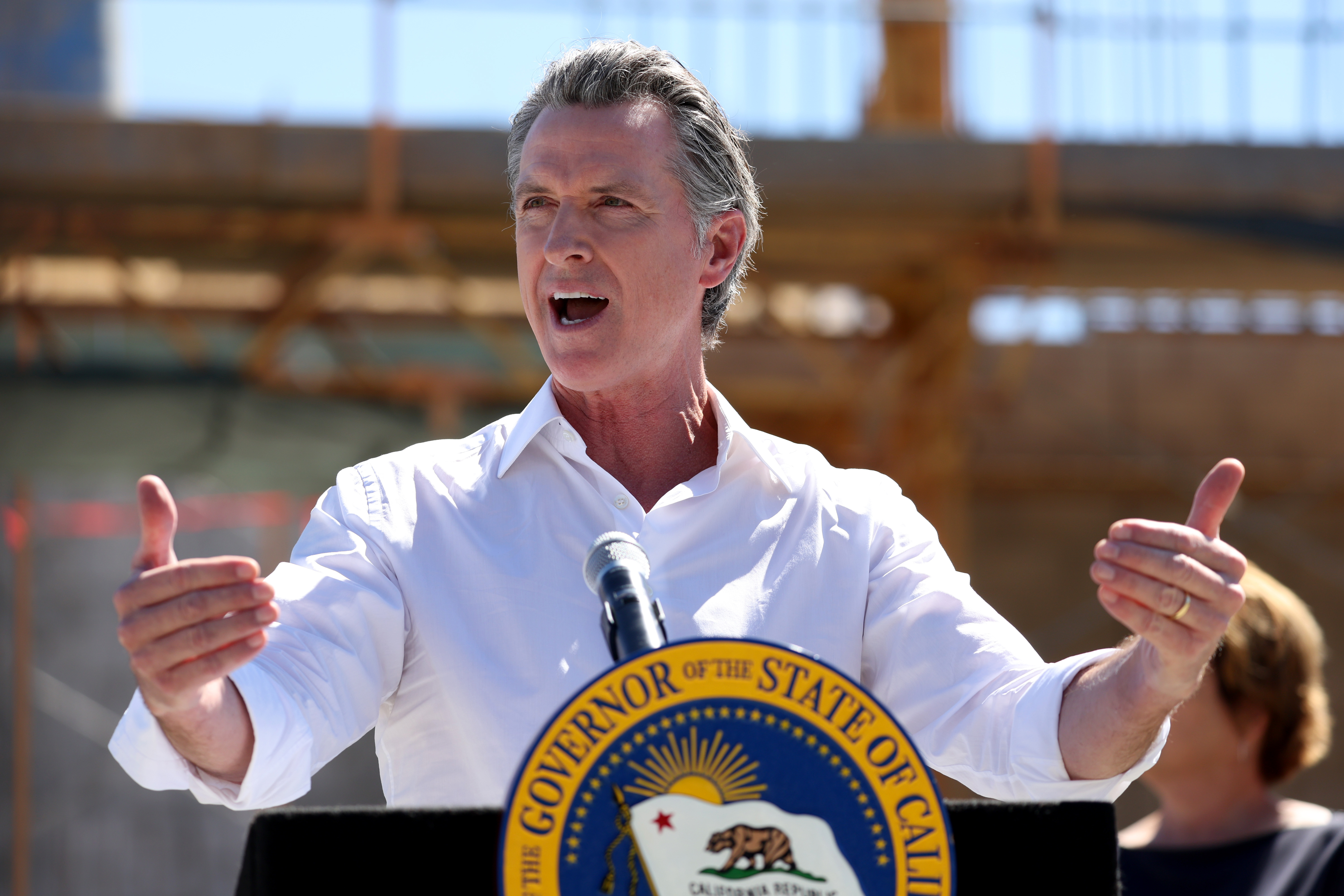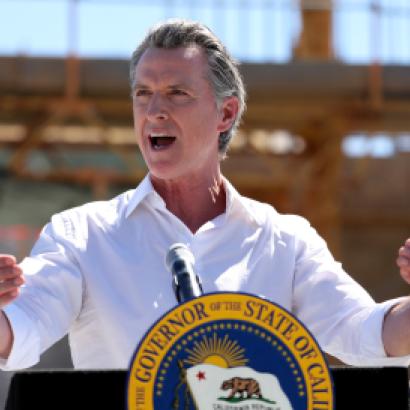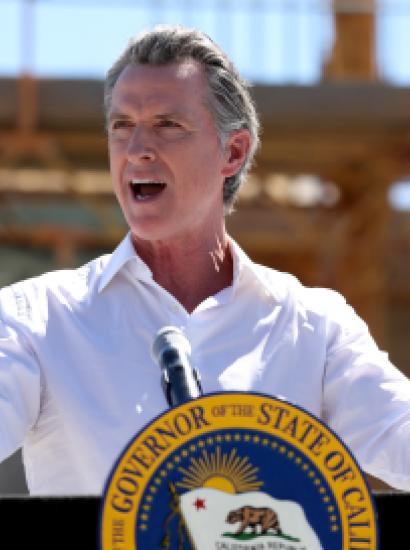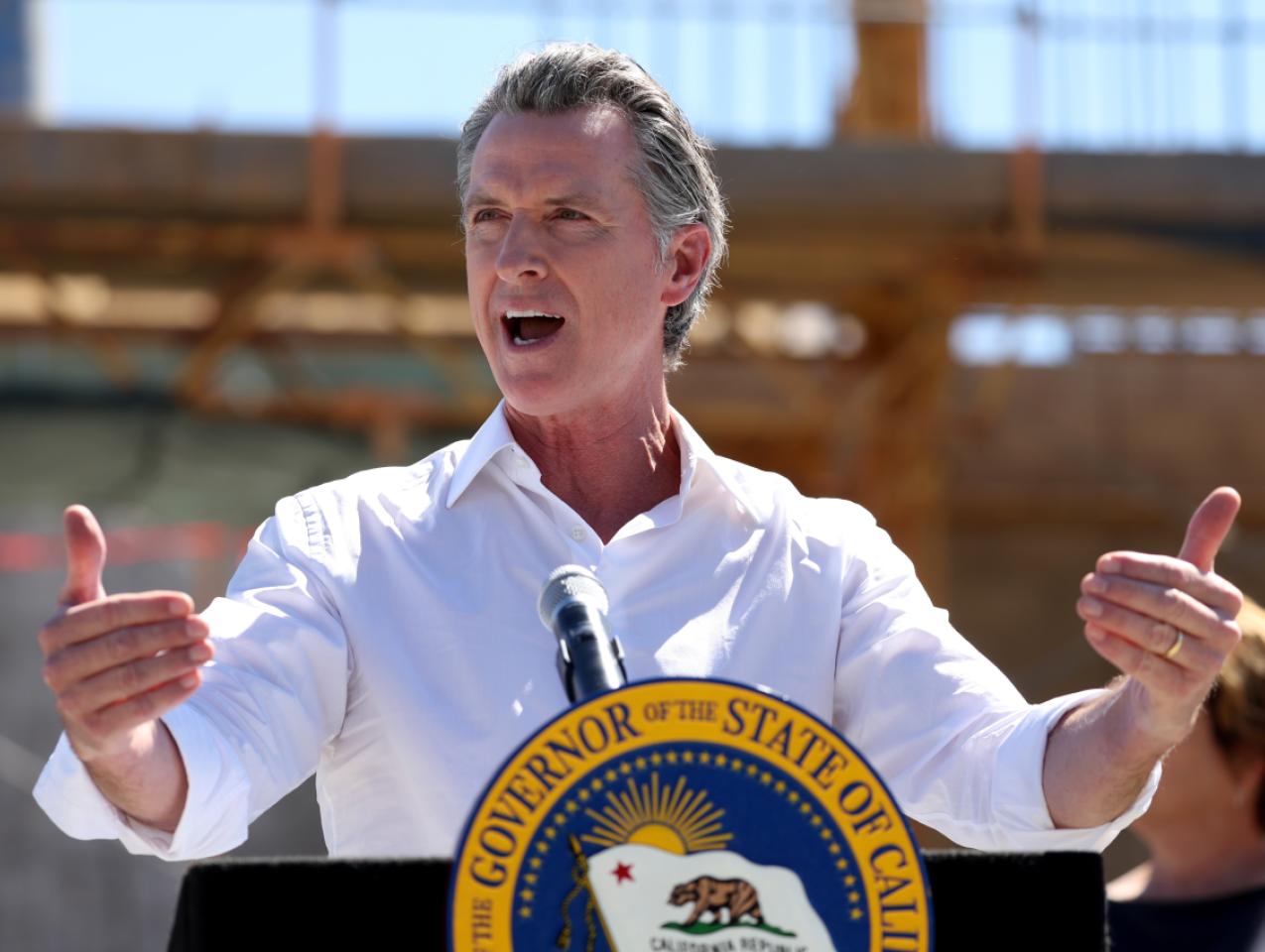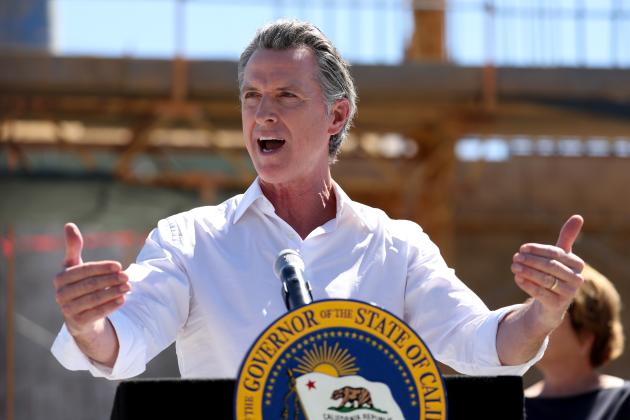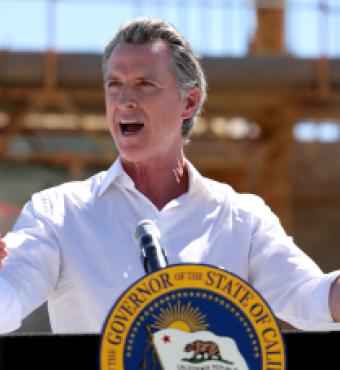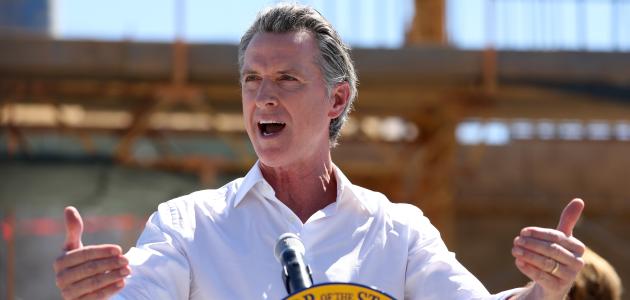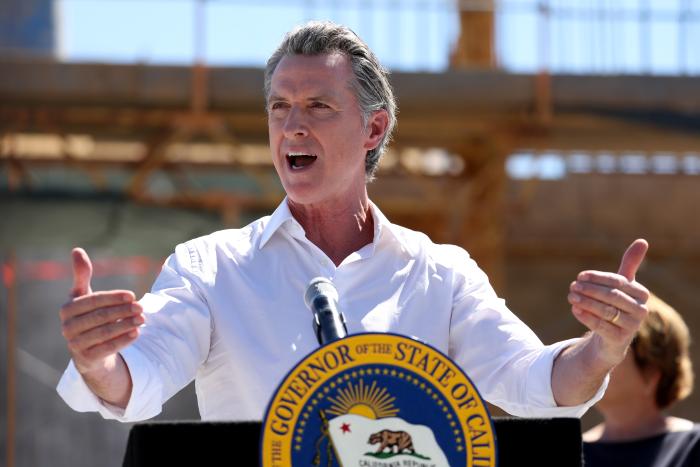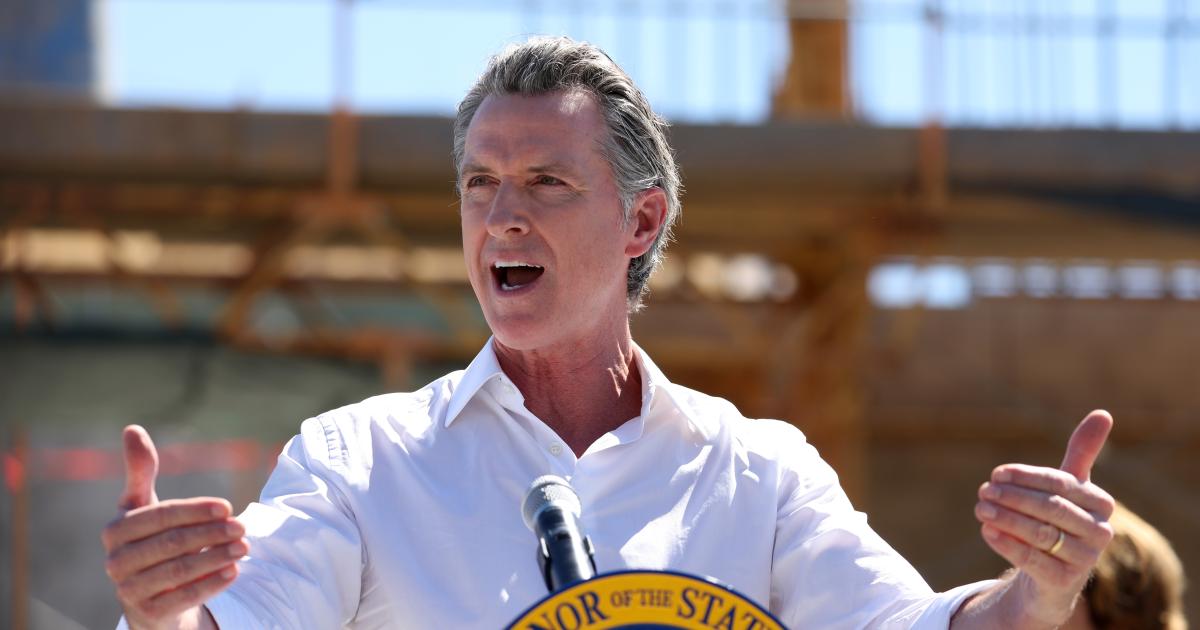- State & Local
- California
We begin this column with a pop quiz having to do with California governor Gavin Newsom’s visit last weekend to Washington, DC—Newsom’s second April trip beyond the Golden State’s borders for reasons not necessarily germane to California’s affairs.
Newsom was in the nation’s capital to:
- Help President Biden’s reelection campaign, as advertised to reporters
- Check out what if anything remained of the Tidal Basin’s cherry blossoms
- Keep the presidential buzz alive on the remote chance that Biden changes his mind about seeking reelection, or . . .
- All of the above
The correct answer?
- A combination of the third option—keeping the buzz alive, though a Newsom 2028 bid is the more realistic option now that Biden has stated his intentions for 2024—plus taking a victory lap for the manner in which Biden framed his argument for a second term.
Here’s where Newsom has a right to gloat: Biden’s three-minute video, released not long before Newsom’s arrival in DC, announced his 2024 candidacy with the repeated use of the word “freedom”—the first word, in fact, uttered by Biden in his pitch to voters.
The American president didn’t offer any thoughts as to the state of the economy (inflation, a dodgy banking sector) or world conditions (war in Ukraine and the growing threat of hostilities with China). Yet Biden chose instead to repeatedly evoke the “f-word” as a rationale for four more years (“more freedom or less freedom, more rights or fewer”).
How this relates to Newsom: California’s governor dropped “f-bombs” in January’s inaugural address: (“we’re a state of dreamers and doers bound by our live-and-let-live embrace of personal freedom”). That was six months after Newsom’s gubernatorial campaign ran a television ad in Florida with this plea from California’s governor: “Freedom is under attack in your state. Republican leaders—they’re banning books, making it harder to vote, restricting speech in classrooms, even criminalizing women and doctors. I urge all of you to join the fight, or join us in California, where we still believe in freedom.”
How effective was the message? Four months after Newsom’s ad ran, Florida governor Ron DeSantis was returned to office with 59.4 percent of the statewide vote (Newsom received 59.2 percent in his own re-election run).
In this regard, Newsom may have lost the battle: barring the unforeseen, a 2024 White House run is off the table. But one can argue that California’s governor is winning the war in that the man whose job he covets is road-testing Newsom’s message on a national stage.
As for Newsom wanting to continue the presidential buzz, that’s one way to explain why he was working the party circuit in advance of last Saturday’s White House Correspondents Dinner.
This weekend’s social mixers are not to be confused with a roomful of reporters asking uncomfortable questions about the state of Newsom’s Golden State. Rather, it’s national political reporters and Washington power players schmoozing with the likes of politicians and celebrities (though not exactly A-list talent). For Newsom’s long-term purposes, it’s the same elite journalistic class that handicaps presidential fields and parachutes into California for field reports that tend to focus more on charm and personality than actual policy—and will be asking what comes next for the Democratic Party . . . well, pretty much the moment the dust has settled after the November 2024 election.
As for the dinner itself, such an event lends itself to jocularity (Biden told jokes) mixed with a little solemnity (former California governor Arnold Schwarzenegger opened the festivities with a video praising the press for holding politicians accountable).
Still, the hypocrisy in the room was hard to miss.
That begins with the president. Despite the evening’s lofty talk of adversarial, watchdog journalism, the relationship between Biden and capital journalists is anything but that—not when Biden, at a media availability last week, was caught holding a cheat sheet telling him what question a Los Angeles Times reporter was about to ask. (Although the Times denied submitting the question in advance, it doesn’t explain how the White House press shop had enough time to print out the question on a card, plus add a headshot of the reporter with a pronunciation of her name.)
Newsom likewise is guilty of media hypocrisy. The same governor who hobnobbed with reporters in the nation’s capital last weekend doesn’t treat the Sacramento press corps with the respect it deserves.
In California’s state capital, reporters gripe about queries to administration officials that go ignored—that is, when they’re not being asked for questions in advance or refusing to attribute information to spokespeople. It’s not like California’s state government lacks for resources—or people to answer an email or return a phone call. According to a count conducted by the state’s Department of Human Resources, California’s executive branch houses 435 employees (at a taxpayers’ cost of up to $44.8 million) tasked with communicating public information.
To the extent there’s friction between the Newsom administration and the Sacramento press corps, it’s been building for some time.
During the height of the pandemic, Newsom’s communications team came to realize that, as the governor continually served up convoluted word salads during his daily COVID-19 briefings, the governor was leaving more questions than answers.
But once the pandemic waned and Newsom survived a recall challenge, a new reality set in: facing little in the way of competition at home, a term-limited governor set his sights elsewhere. That led to the aforementioned ad-drop in Florida, plus April’s tour of the Deep South—that first burst of Newsom wanderlust taking the governor and his family to Alabama, Arkansas, and Florida to see iconic civil-rights sights and disparage red states as unenlightened backwaters of repression.
Such travel comes with a downside, depending on how hard a California governor—a stranger in strange lands—tries to fit in. During Newsom’s Florida visit, a conservative journalist tweeted the following, referencing the serial killer from American Psycho: “Gavin Newsom booked a room at a public library near New College of Florida, told the audience he was ‘crawling out of my skin for you guys,’ and clapped along to the music like a kindergartner at storytime. Serious Patrick Bateman vibes.”
Back in California, news publications aren’t likening the governor to a homicidal maniac—albeit a well-coiffed one. But they would like to see a return to normalcy and Newsom devoting more of his time to in-state matters.
One policy matter in need of gubernatorial revisit would be housing. As my colleague Lee Ohanian explains in this column, Newsom is woefully behind on his promise of 3.5 million new housing units by 2025. Also worthy of the governor’s focus: California’s “Big Melt” as warmer temperatures turn snowpack into watery runoffs that will flood lower elevations. (Newsom, to his credit, is paying attention to the potential disaster, though it remains to be seen if he’ll go along with twelve state Assembly members’ request of $200 million to deal with San Joaquin Valley flooding.)
Sadly, for Newsom, a renewed California comes with a price if a natural disaster strikes the Golden State: the freedom to travel to other states and engage in value-shaming and national politicking.
The governor can’t run for president, but he did succeed in getting the president to parrot his language.
If you’re Gavin Newsom, why not quit while you’re ahead?







